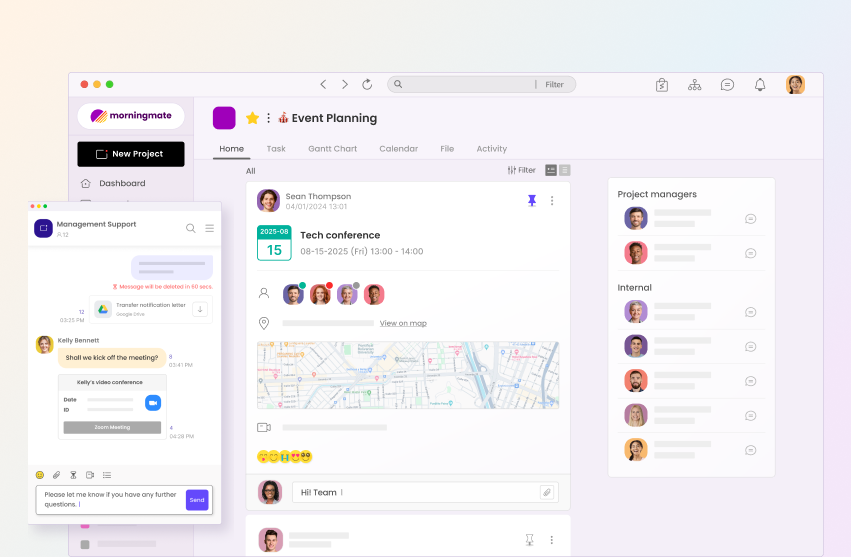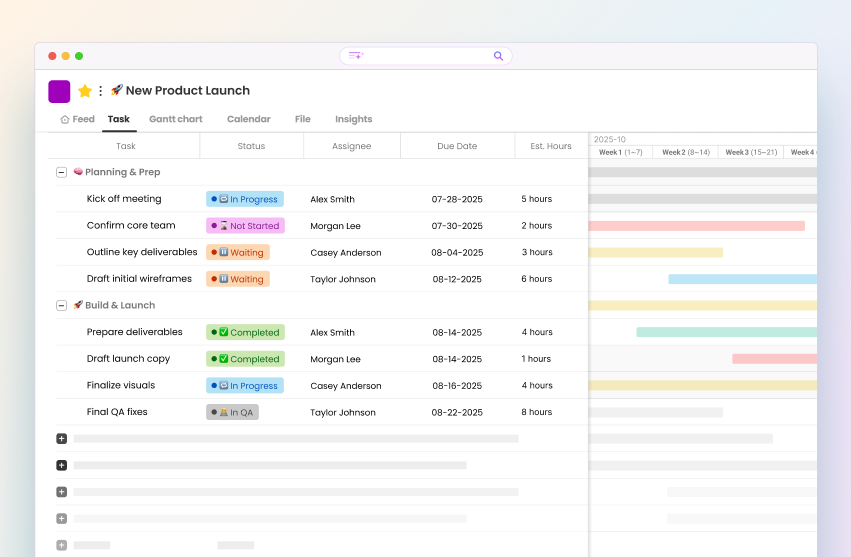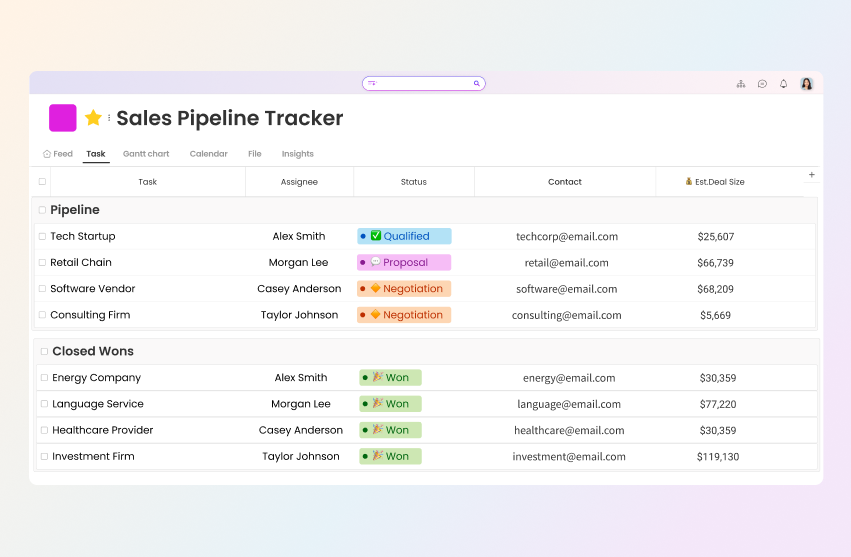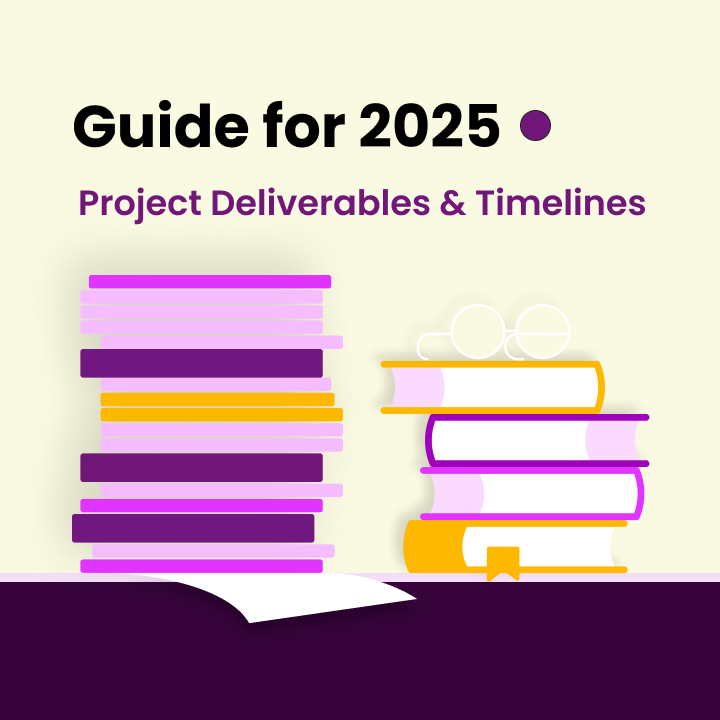Are you new to managing projects and deadlines? Tasks, tools, people—everything has become too much for you. Is your work like a messy cupboard, and you just don’t know where to start? That’s precisely what this guide is here to help with.
Here, we will briefly explain project management basics. We will teach you what a project really is, why managing it well matters, and how to handle the moving parts—like planning, tools, roles, and timelines.
Think of this as a starting point. Whether you’re leading your first project or just want to understand better how things come together, project management 101 will give you the structure you need to work and achieve your goals. Let’s begin!
What is Project Management?
Project management is about using the proper knowledge, skills, tools, and techniques to get things done. It helps plan, run, and control a project so everything stays on track with the goals, timeline, and budget. For better understanding, let’s first learn what a project actually is.
What Defines a Project?
A project is a combination of different tasks that you need to perform to achieve a specific goal. It could be anything like building a new house, developing a game/website or any other thing which fits in the definition. .
It has a beginning and an end, a clear target you’re aiming for, a team of people involved, and some resources you’ll need to use. These details depend upon the outcome you want and the timeframe you want.
What Makes Project Management Different?
Now, what’s the big deal about project management anyway? It’s an innovative and efficient way to achieve any goal. You are not just doing things randomly. Everything is properly planned and organized. The goal is to stay focused on what matters most and achieve your goal in time.
Plus it involves the use of proper techniques like Gantt charts and Agile for work. These techniques ensure everything remains under control and gets completed in time.
Learning project management basics helps to build a strong foundation to handle both small and large projects confidently.
Why Project Management Matters?
Regardless of your business, excellent project management keeps teams on track, keeps costs in check, and meets all the due dates. Without it, there’s wasted time, failed objectives, and dissatisfied customers.
Benefits for Businesses and Teams
There are several benefits of project management for businesses and teams. The following are the three key ones among them:
- Increased productivity: It increases productivity because everyone has assigned roles with timelines and tools.
- Improved communication: Secondly, it promotes collaboration by aligning responsibilities, updates, and expectations.
- Increased likelihood of success: A project with proper management has higher chances of achieving their goals in time as compared to others.
Businesses can benefit from delivering their products on time and obtaining satisfied clients. Teams can also benefit from it by reducing confusion, anxiety, and duplicative work. It just makes your job simpler.
Common Challenges It Solves
Without proper project management, things can go south fast. You’ll often see:
- Scope creep: Work just keeps accumulating with no foreseeable end.
- Poor time management: Failure to complete tasks because of insufficient planning.
Budget overruns: Costs spiral out of control.
Project management 101 training addresses these challenges early on. It helps you detect problems before they get complicated and know how to get the project back on track.
That’s why learning project management basics is not just an option, it is necessary for survival in high-paced work situations.
Core Concepts of Project Management
You need to understand a few essential concepts to truly grasp project management fundamentals. These play a crucial role in every successful project. There are three main concepts among these;
- The Triple Constraint
- The Project Life Cycle
- Roles of People
Let’s check these out in detail below.
The Triple Constraint (Scope, Time, Cost)
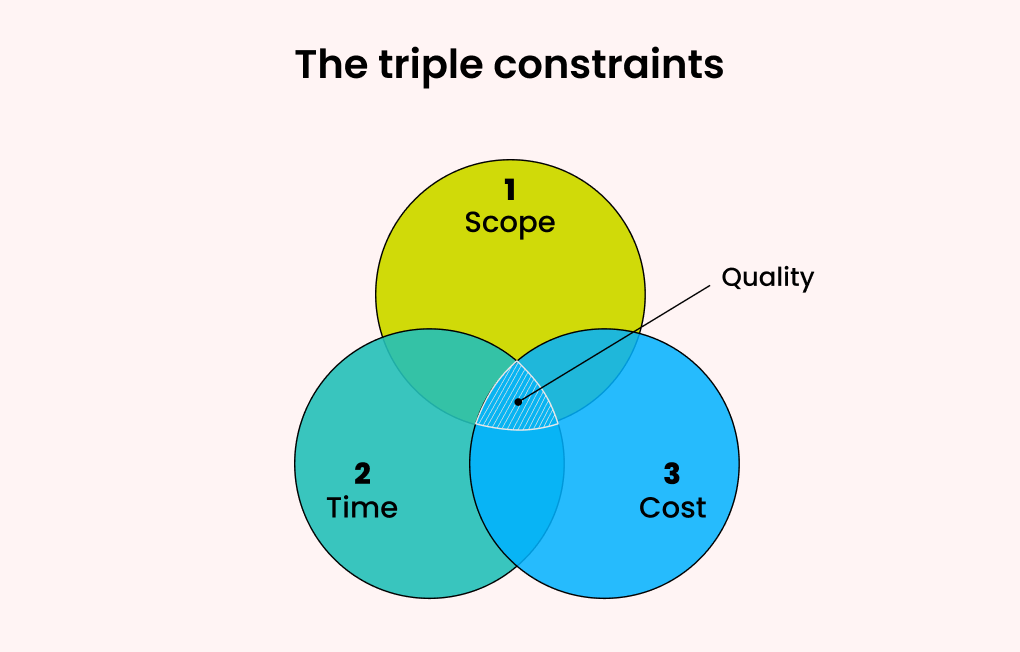
Triple Constraint is the first and most important concept you need to understand in project management 101. It is also called the Iron Triangle. It has three main elements. These include:
- Scope: What the project will deliver
- Time: The deadline for completion
- Cost: The budget and resources available
Think of it like a triangle—if one side shifts, the others must adjust. If your scope expands (more features or tasks), either the time or cost (or both) must increase. Beginners often overlook how interdependent these elements are. But managing them well keeps the project on track without sacrificing quality.
Project Life Cycle Stages
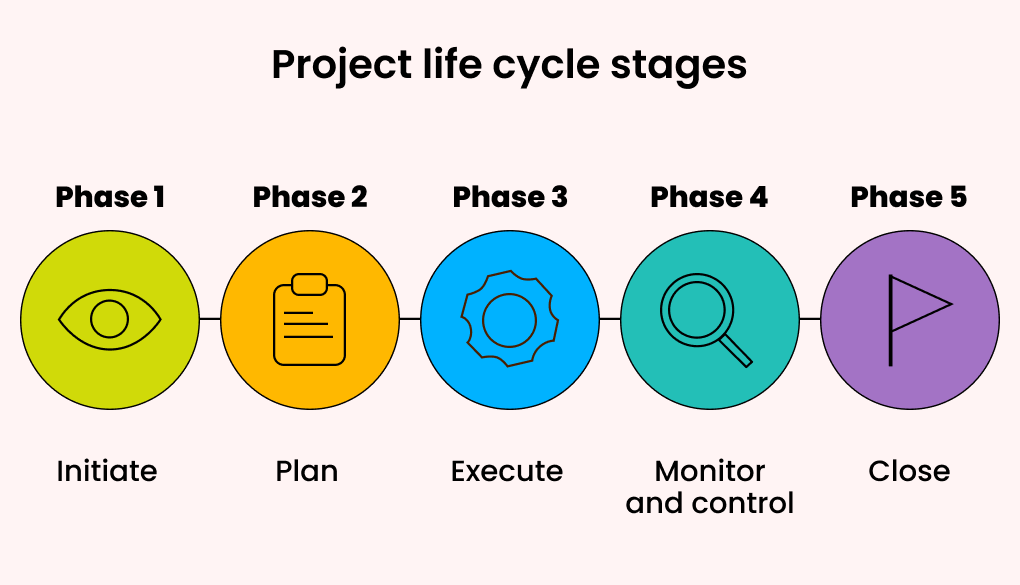
Projects typically move through five main phases:
- Initiation – Define the project’s value, scope, and stakeholders. Why does this project matter?
- Planning – Map out the steps, timeline, resources, and risks.
- Execution – Carry out the tasks using your plan as the guide.
- Monitoring & Controlling – Measure progress, control changes, and resolve issues.
- Closure – Wrap up, hand over results, and evaluate what worked and what didn’t.
Each phase has its own purpose and deliverables. Understanding this life cycle gives structure to your work and helps you avoid missing steps that lead to confusion or failure.
Key Roles in a Project
A successful project depends on having the right people in the right roles:
- Project Manager – The leader who plans, tracks, and keeps everything running.
- Team Members – Specialists and contributors doing the work.
- Stakeholders – Anyone affected by or invested in the project’s outcome.
- Sponsor – The executive or client who funds and authorizes the project.
You may also hear roles like Scrum Master or Product Owner if you work in an Agile setting. They help to reduce confusion and make collaboration smoother.
Mastering these core ideas is essential in any project management 101 training. Without structure, even the best ideas fall apart.
Project Management Approaches
Different project management methods are used for various industries and teams. Below, we have discussed the two most common among them and a few alternatives. Choose the one that is most suitable for your project.
Waterfall vs. Agile
Waterfall is a step-by-step method. You finish one phase before moving to the next. It’s great for projects with clear goals, like construction or hardware development.
- Pros: Easy to manage, good documentation.
- Cons: Not flexible if things change mid-way.
Agile is all about flexibility. Work is done in small chunks called “sprints,” and teams adjust as they go. It’s perfect for software, creative work, or anything that might evolve.
- Pros: Fast feedback, adaptive to change.
- Cons: Needs strong team communication and discipline.
Hybrid and Other Frameworks
Some teams blend Agile and Waterfall to get the best of both—this is called Hybrid. Depending on the project type, others may use Scrum, Kanban, or Lean.
- Scrum: It involves sprints and daily stand-ups for fast progress.
- Kanban: It provides a visual task board to manage flow.
- Lean: It focuses on reducing waste and increasing the value.
Learning these approaches is a big part of project management 101 training. Even if you start small, understanding these methods helps you pick the right one for your team or career.
Essential Tools and Documents
To manage projects well, you don’t just need people and plans—you need the right tools and documents to track progress, collaborate, and stay organized.
Gantt Charts, Dashboards, and Task Trackers
These are the go-to tools in project management basics:
- Gantt Charts: They show visual timelines with tasks, deadlines, and dependencies.
- Dashboards: It provides live snapshots of project health, budget, timelines, and task status, all in one place.
- Task Trackers: It divides work into manageable tasks, assigns owners, and sets due dates.
You can easily manage these visuals by using tools like MorningMate.
Project Plan, Budget, Timeline Templates
Beginners benefit from structured templates. Some must-haves include:
- Project Plan: Outlines objectives, scope, and approach.
- Project Budget: Lists costs for resources, equipment, and staffing.
- Timeline Template: Establishes dates for delivery of tasks and milestones.
These documents keep your project within scope and on budget. They are also reusable for future projects.
Using templates and tools isn’t reserved for gurus. Project management 101 starts with them. They cut out guesswork, improve communication, and allow precise tracking of each step.
Consider them your project’s GPS. Don’t take a trip down the highway without one—don’t undertake a project without them.
Getting Started in Project Management
You don’t need years of experience to start your journey. Plenty of beginners grow into successful project managers by beginning with the basics.
Entry-Level Certifications
Certifications build confidence and make you job-ready. Some great options include:
- Certified Associate in Project Management – Ideal for beginners.
- Google Project Management Certificate – Offers strong foundational training.
- PRINCE2 Foundation – Popular in the UK and Europe.
These programs teach real-world techniques, tools, and terminology you’ll use every day.
Self-Learning Resources and Training Options
You can also learn at your own pace with:
- Free YouTube courses on project management 101
- Coursera or LinkedIn Learning classes
- Templates and blogs from tools like Morningmate, Wrike, or Smartsheet
The key is to start small—take on a team task or lead a small project. Apply what you learn and build your skills over time. With the right mindset, anyone can go from zero to leading confident, well-executed projects.
Ready to Make Your Project Management More Efficient? Try Morningmate Today
You’ve just taken your first big step by learning the project management basics—from timelines and roles to tools and life cycles. With this foundation, you’re already better equipped to handle your next project with structure and clarity.
But knowledge alone isn’t enough. To actually apply these principles and manage your team’s work smoothly, you need the right platform—something simple, flexible, and powerful.
That’s where Morningmate comes in.
Morningmate is your all-in-one project management tool. It helps beginners and pros alike:
- Switch between calendar, Gantt chart, task list, or feed view for how your team works best.
- Track everything with visual progress summaries and workspace activity records.
- Centralize communication through chat, voice messages, and built-in video calls.
- Keep everything organized with folders, file views, and smart search filters.
- Stay in control with admin tools to manage users, permissions, and downloads.
No clutter. No confusion. Just smooth, structured execution—exactly what your project needs.


